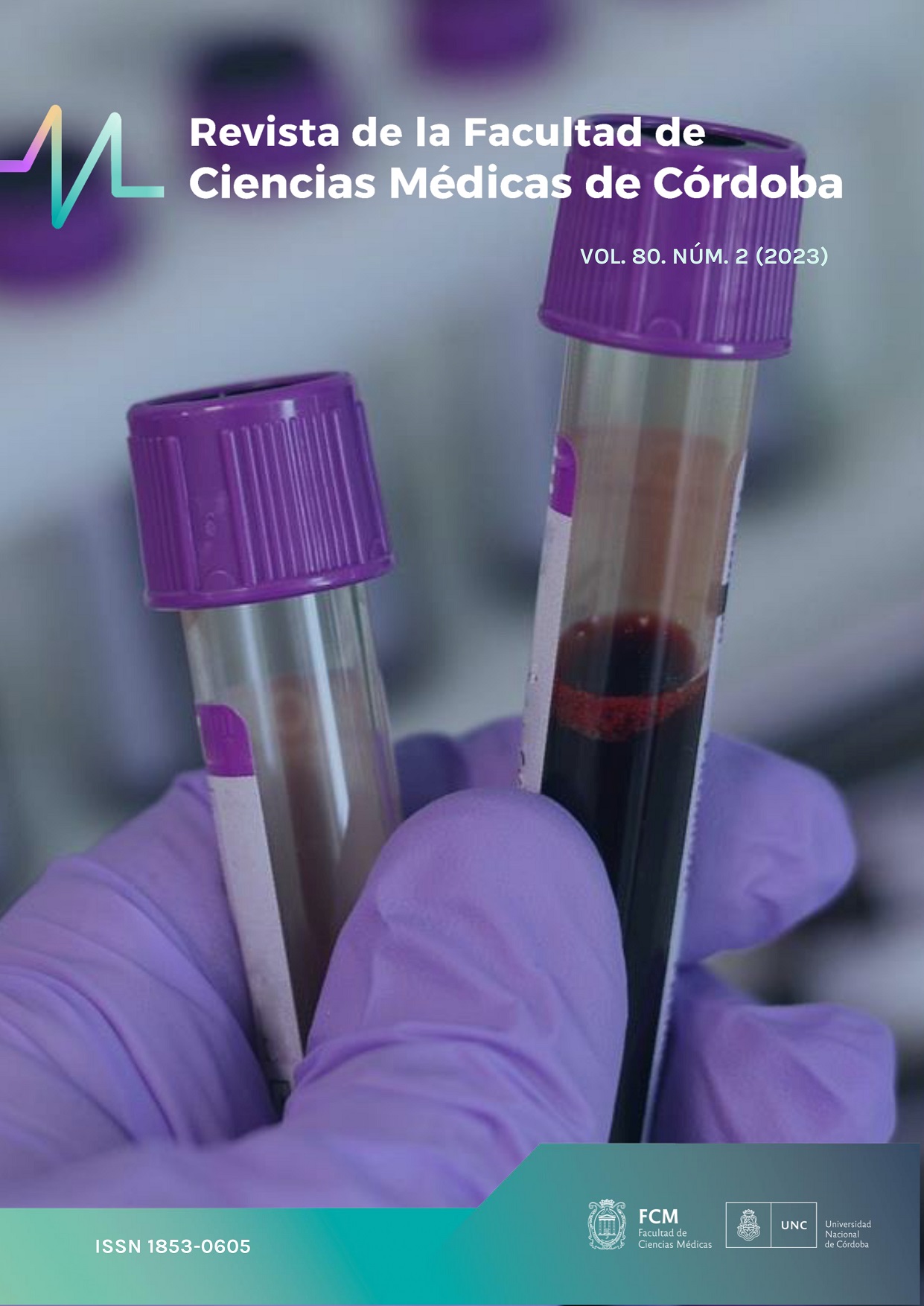Urea cycle defects: diagnosis, treatment and follow-up in a cohort of 51 patients, Córdoba, Argentina.
Keywords:
urea cycle disorders, hyperammonemia, treatment, differential diagnosisAbstract
Urea cycle defects (UCDs) are inborn errors of metabolism that affect the elimination of ammonium, the final product of protein catabolism. The symptoms of UCD are related to hyperammonemia and include refusal of food, vomiting, convulsions, cerebral edema, coma, among others, increasing morbidity and mortality. The onset, neonatal or late, depends on the pathogenic genetic variants that affect the function of the enzymes involved. These diseases are underdiagnosed in our environment due to lack of suspicion and lack of availability of diagnostic tests. Treatment should be started early and includes low protein diet, ammonium chelators, hemodialysis. Objective: To describe the local experience in the diagnosis, treatment and follow-up of patients with UCD.
A retrospective study of 51 patients with a diagnosis of UCD (period 2000-2024) studied at CEMECO, Children's Hospital of Córdoba was carried out. Clinical, biochemical, genetic and treatment data were collected.
The recognized UCD included the following enzymatic deficiencies: ornithinetranscarbamylase (53%), argininosuccinate synthetase (37%), argininosuccinate lyase (8%) and hyperornithinemia-hyperammonemia-homocitrulinuria syndrome (2%); 96% of the cases were genetically confirmed. Fifty-three percent (27/51) of the cases had neonatal onset. Clinical manifestations at debut included neurological/digestive symptoms; the mean plasma ammonium value at diagnosis was 1034 µmol/L (normal <80). The delay between symptom onset and diagnosis was 5.6 days (0-26) in neonatal forms and 6 months (0-4 years) in late forms. Presymptomatic diagnosis was made in 11 patients. Treatment included low-protein diet and dietary supplements, ammonium chelators (benzoate and/or sodium phenylbutyrate) and hemodialysis depending on the form of presentation, severity of symptoms and hyperammonemia crisis. The overall mortality rate was 61% (31/51), in symptomatic patients with neonatal presentation 89% (24/27) and 54% (7/13) late presentation.
The paper presents local experience in patients affected with UCD; these diseases are considered medical emergencies that should be recognized early, diagnosed specifically and treated intensively to improve the immediate and long-term prognosis of affected patients.
Downloads
References
.
Downloads
Published
Issue
Section
License
Copyright (c) 2024 Universidad Nacional de Córdoba

This work is licensed under a Creative Commons Attribution-NonCommercial 4.0 International License.
The generation of derivative works is allowed as long as it is not done for commercial purposes. The original work may not be used for commercial purposes.



